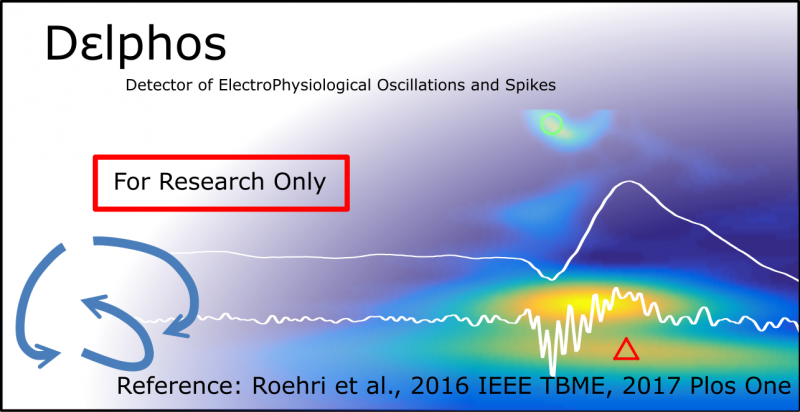Difference between revisions of "AnyWave:Delphos"
From WikiMEG
| (3 intermediate revisions by 2 users not shown) | |||
| Line 1: | Line 1: | ||
| − | [[File:delphos.png]]<br/> | + | [[File:delphos.png|800px]]<br/> |
| − | Delphos, | + | == How To Cite == |
| − | + | '''Please cite the method implemented in Delphos with:'''<br/> | |
| − | [[ | + | N. Roehri, J. -M. Lina, J. C. Mosher, F. Bartolomei and C. -G. Bénar, "Time-Frequency Strategies for Increasing High-Frequency Oscillation Detectability in Intracerebral EEG," in IEEE Transactions on Biomedical Engineering, vol. 63, no. 12, pp. 2595-2606, Dec. 2016, doi: https://doi.org/10.1109/TBME.2016.2556425. |
| + | <br/><br/> | ||
| + | '''and the validation with:'''<br/> | ||
| + | What are the assets and weaknesses of HFO detectors? A benchmark framework based on realistic simulations | ||
| + | Roehri N, Pizzo F, Bartolomei F, Wendling F, Bénar CG (2017) What are the assets and weaknesses of HFO detectors? A benchmark framework based on realistic simulations. PLOS ONE 12(4): e0174702. https://doi.org/10.1371/journal.pone.0174702<br/><br/> | ||
| + | |||
| + | == User Manual of Delphos == | ||
| + | |||
| + | <pdf width="800" height="400" page="1">File:User_Manual_Delphos.pdf</pdf><br/>[[Media:User_Manual_Delphos.pdf]]<br/> | ||
| + | |||
| + | == User Manual of Delphos == | ||
| + | <pdf width="800" height="400" page="1">File:User_Manual_Delphos_viewer.pdf</pdf><br/>[[Media:User_Manual_Delphos_viewer.pdf]]<br/> | ||
Latest revision as of 12:49, 8 February 2021
How To Cite
Please cite the method implemented in Delphos with:
N. Roehri, J. -M. Lina, J. C. Mosher, F. Bartolomei and C. -G. Bénar, "Time-Frequency Strategies for Increasing High-Frequency Oscillation Detectability in Intracerebral EEG," in IEEE Transactions on Biomedical Engineering, vol. 63, no. 12, pp. 2595-2606, Dec. 2016, doi: https://doi.org/10.1109/TBME.2016.2556425.
and the validation with:
What are the assets and weaknesses of HFO detectors? A benchmark framework based on realistic simulations
Roehri N, Pizzo F, Bartolomei F, Wendling F, Bénar CG (2017) What are the assets and weaknesses of HFO detectors? A benchmark framework based on realistic simulations. PLOS ONE 12(4): e0174702. https://doi.org/10.1371/journal.pone.0174702
User Manual of Delphos
Media:User_Manual_Delphos.pdf
User Manual of Delphos
Media:User_Manual_Delphos_viewer.pdf
